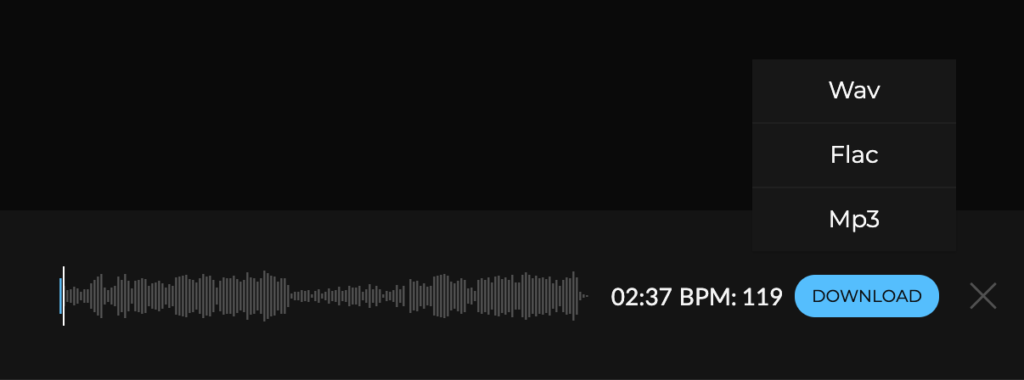What is the Difference Between MP3, FLAC & WAV?
You’ve probably come across these various audio file formats before. But what is exactly is the difference MP3, WAV and FLAC?
Whether you’re looking for a soundtrack for your indie film, some tunes for a podcast, or SFX for videos on YouTube, there are three main and widely used types of audio file format to choose from; lossy, uncompressed, and lossless. The common examples of these formats are MP3, FLAC, and WAV, respectively. Of course, you can really delve deep into what separates these formats from one another. But we’re here to give you a quick explanation on the difference between each one!
MP3
MP3 files are lossy format audio files, lossy being a type of file compression. Put very simply, lossy files are compressed files which lose some of the original file data. Once you convert a file to lossy, the process is irreversible. Often, it is a toss up between file size and quality, with lossy being the lower quality format generally.
FLAC
FLAC files are an example of lossless audio. A lossless file is an audio file that has been compressed to almost half the size of an uncompressed file, but shouldn’t lose any of its original quality. This is what makes them a popular choice amongst musicians. They are better than CD-quality, but don’t take up too much space.
WAV
WAV files are an example of uncompressed audio files, and are the largest of the three types. The data of a file is stored as-is in its original form. Although WAVs can store compressed audio, generally WAV audio format is uncompressed audio in the linear pulse-code modulation (LPCM), which is the same as CD formatting.
At Synchedin we have made all our audio assets available to download as an MP3, WAV or FLAC file. The site has an internal converter, which means you can get whichever file type you like with just a click of a button.

We understand that creators can often be stretched for time. We’ve made it so that you don’t need to spend precious minutes trying to convert a tricky MP3 download or fiddling about with file conversion software.
